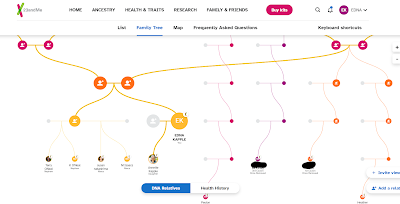If you're looking to trace your ancestry, you may have come across two popular models: AncestryDNA ThruLines and 23andMe's Family Tree. Both of these models use DNA testing to generate a family tree, but there are some key differences to keep in mind when using them.
AncestryDNA ThruLines generates a pedigree chart using both family trees posted on their site and DNA matches. However, the relationships shown on the chart are only potential and not guaranteed. You may occasionally find that some of your matches are related to you more than once, and checking shared matches can help to verify the relationships suggested by ThruLines.
On the other hand, 23andMe doesn't use family trees but instead creates a pedigree chart with only the names of matches and possible shared ancestors (actually it doesn't give names only possible locations on the chart for shared ancestors). The individuals are placed on the chart based on their shared DNA and cousin predictions. However, it's important to keep in mind that these generational predictions can be inaccurate, as it's difficult to predict cousin relationships based solely on DNA. Cousins from the same generation can have different amounts of shared DNA, making it challenging to determine their exact relationship.
In conclusion, while genetically based family trees can provide useful information about your ancestry, it's important to be aware of their limitations. It's always a good idea to check shared matches and other sources to verify the relationships suggested by these models. By doing so, you can get a more accurate picture of your ancestry and better understand your family history.


No comments:
Post a Comment